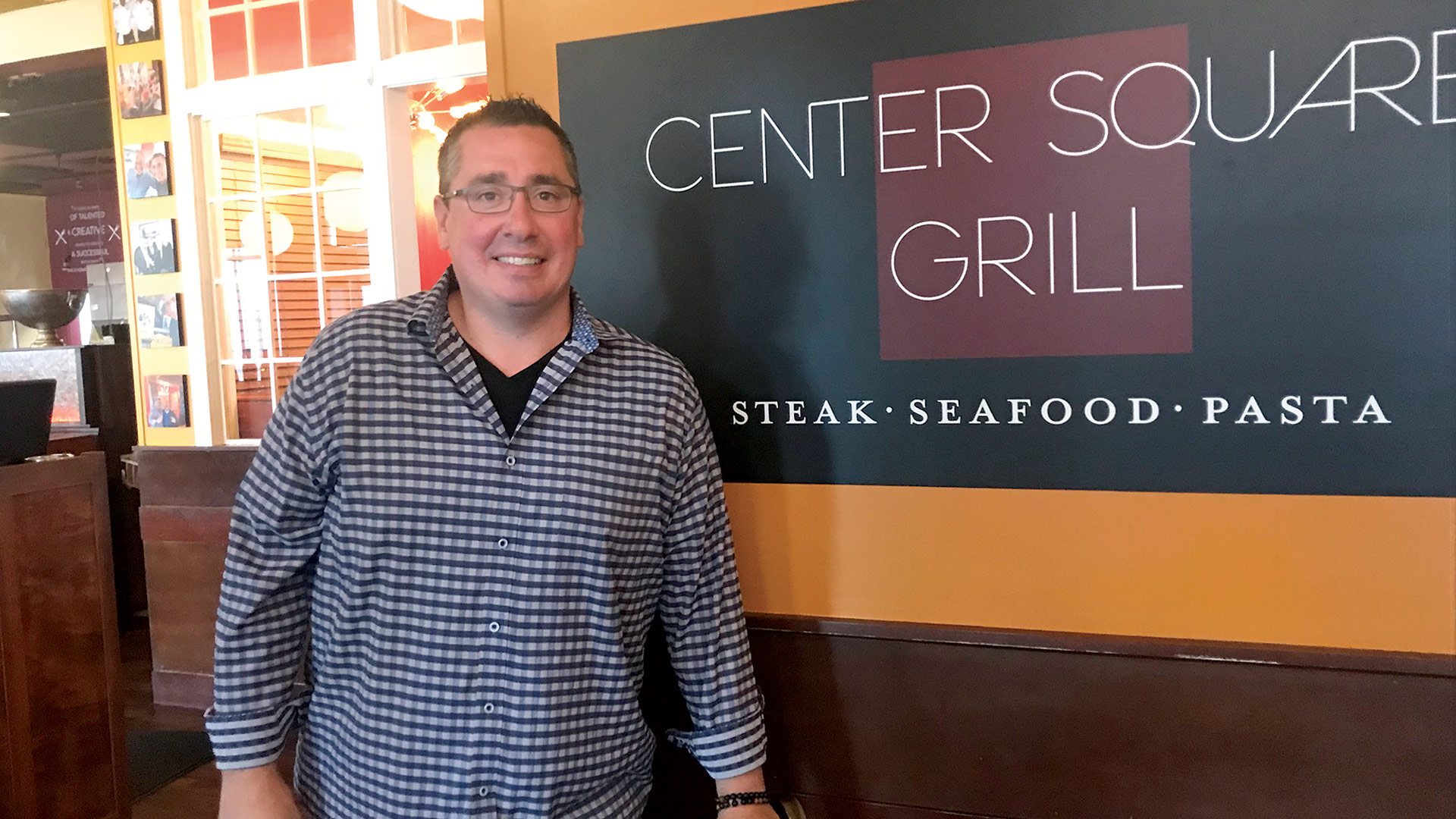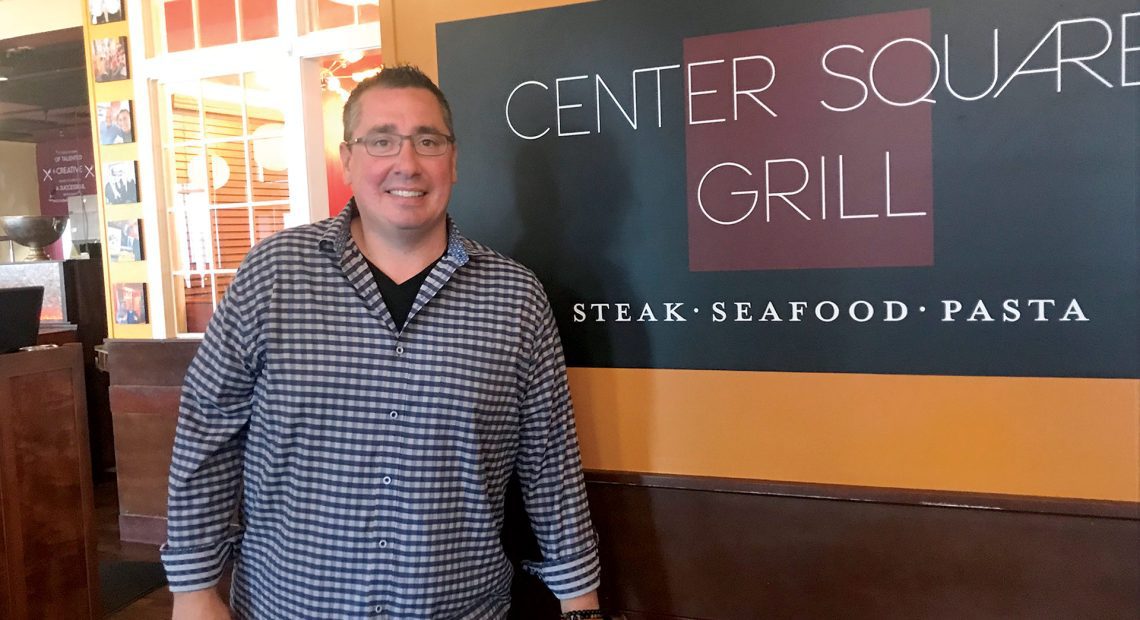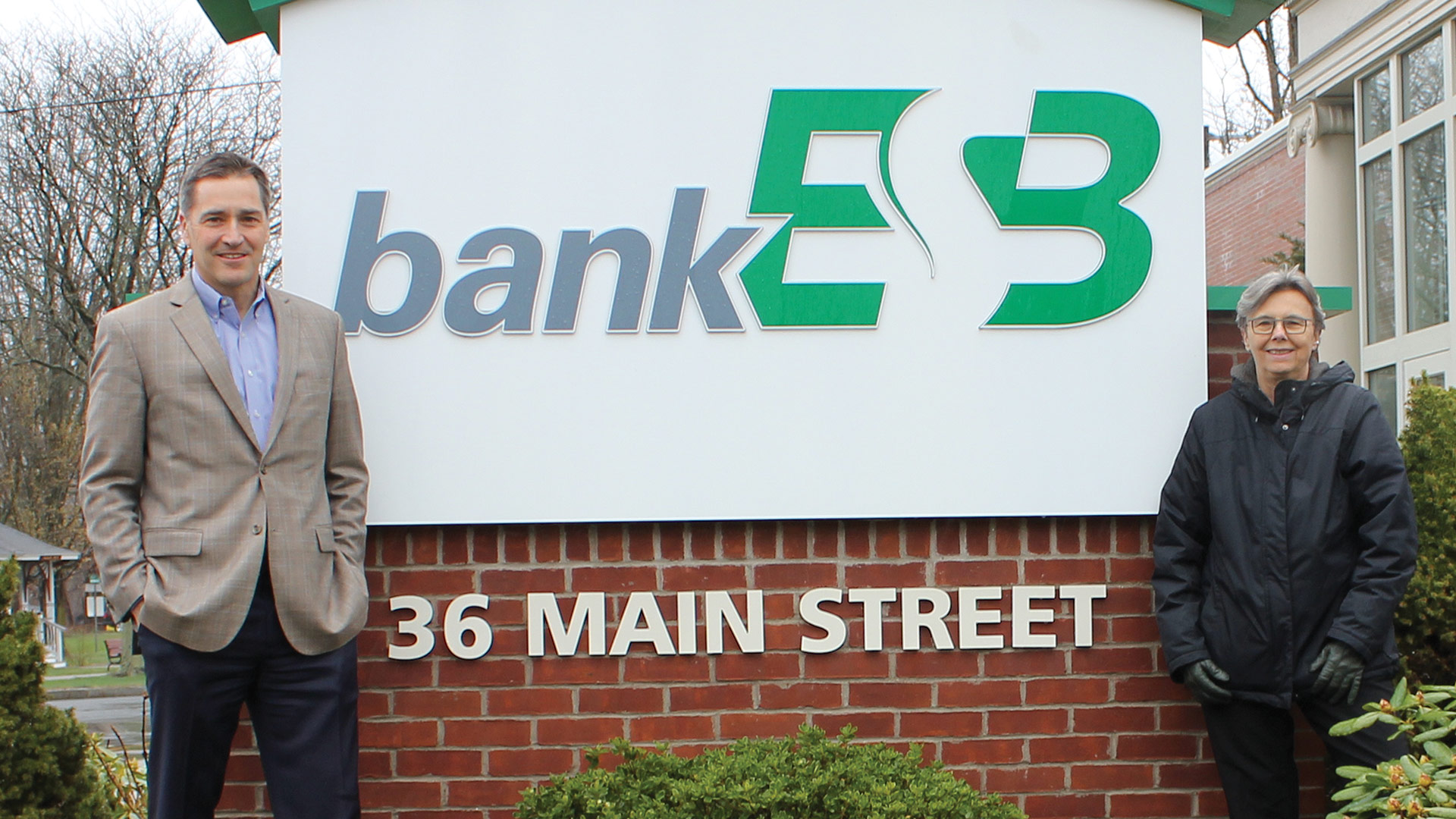They Have a Lot on Their Plate

Bill Collins
One restaurateur called it a ‘triple whammy.’ He was referring to a combination of forces — specifically soaring prices, supply-chain issues, and an ongoing workforce crisis — that are standing in the way of a full bounce back from two years of COVID. Despite these issues, restaurant owners are optimistic that 2022 will bring something approaching normal. Eventually.
By Mark Morris
When 2022 began, Bill Collins was anticipating a full year of uninterrupted business for his restaurant, the Center Square Grill. He did not foresee what he called a “major punch in the face” that shut down the restaurant for six weeks.
In January, one of the thermostats in the restaurant’s dining room failed, causing one sprinkler head to freeze. When the heat came back on, the ice in the line moved and activated the sprinklers. By the time Collins could shut off the sprinklers, the restaurant had taken on nearly 15,000 gallons of water.
“The basement was a nearly complete gut job,” Collins said. “In the dining room, we replaced floors, seating, and several walls.” It took exactly six weeks to go from the flood to opening the doors once again.
Locating a contractor can take six weeks, so how did Collins make the repairs to Center Square and re-open so quickly?
“I looked to my customer base and called the contractors who are regulars at the restaurant,” he said. “They had a vested interest in getting us back open.”
In some ways, the sprinkler incident is a metaphor for the struggle for area restaurants as they look to make a full comeback after the pandemic. Just when people are dining out again and restaurant owners are looking to make up for two years of lost business, they are getting hit with spikes in food costs, increased labor costs — when and if they can find staff, that is — and various supply challenges that affect food and kitchen operations.
“I looked to my customer base and called the contractors who are regulars at the restaurant. They had a vested interest in getting us back open.”
“It’s a triple whammy,” said Ralph Santaniello, co-owner of the Federal Restaurant Group. “In some ways, this has been more challenging than the pandemic.” He quickly admitted that while the pandemic was a crushing event that came out of the blue, governments, communities and vendors all came together to help everyone get through it.
In addition to the Federal in Agawam, Santaniello and partner Michael Presnal own Posto Italian in Longmeadow and Vinted Wine Bar in West Hartford. Following his parents, who were in the restaurant business, Santaniello said he has been in the industry his whole life and has never seen prices as crazy as they are today.
“We used to plan out the business to see where we would be in five years, then it went to five months, and now it feels like it’s five minutes,” Santaniello told BusinessWest.
Everyone we spoke with discussed the challenge of rising costs. Aurelien Telle, co-owner of Alta Restaurant in Lenox, said that even after forecasting for increased costs, they were 6% higher than anticipated in the first quarter alone.

Aurelien Telle, co-owner of Alta Restaurant, says price increases on food the past six months have been “insane.”
“That’s huge and we don’t know where it’s going from there,” said Telle. “In the last six months price increases on food have been insane.”
Adding to the craziness in food costs is unpredictability of what will be affected next.
Andrew Brow, chef and owner of Highbrow Wood Fired Kitchen in Northampton said all restaurants plan their menus with a balance of higher-cost items such as filet mignon and less expensive ones such as pasta. In the past, Brow bought braised short ribs at $5 per pound rather than New York strip steak which costs $10 to 12 a pound. Supplies are so mixed up now, that the short ribs cost as much as the New York strip which hasn’t increased in price.
“There’s no rhyme or reason to the price hikes,” Brow said. “One week mushrooms will triple in price, the next week it’s chicken and spinach.”
Food for Thought
Creating different dishes is one way restaurateurs are adjusting to the chaotic, soaring prices. When scallops escalated from $108 for an eight-pound case to $223, Collins created a new dish that included shrimp, which has held a more stable price. Instead of an entrée with six scallops, he offered in its place a shrimp and scallop entrée using three scallops and three shrimp.
“We used to plan out the business to see where we would be in five years, then it went to five months, and now it feels like it’s five minutes.”
“This way we can keep the dining price where it is and still offer delicious fun food that people expect when they come here,” Collins said.
Gas and electric bills are another area where prices are going up with no end in sight. Santaniello explained that restaurants, by design, are energy intensive with usage increasing in the summer.
“We have air conditioning running all day and night in the summer because when it’s 98 degrees and humid outside people expect to be comfortable when they go into a restaurant.”
It’s not surprising that take out containers spiked in price and were difficult to find at the height of the pandemic. Supply-chain issues also affected restaurants in less obvious ways. Santaniello said he needed a part for an oven door, something that would normally take a week to get, if the repair person didn’t already have one in their truck.
“We waited two months for the part,” Santaniello said. “So, we were down an oven for two months, and that’s difficult in a busy kitchen.”
Santaniello and Telle are experiencing busier than normal kitchens because as customers are returning to their respective restaurants, labor shortages have forced both men to cut back on the hours when they are open.

Andrew Brow says there has been “no rhyme or reason” to price hikes on food in recent months.
“Business has been great because of the pent-up demand of people wanting to go out to eat,” Santaniello said. “Our biggest issue is keeping up with that demand because we’re still looking for employees.”
Before the pandemic, the Federal operated six days a week. Now, in order to give his staff some time off, they are open only 4 days a week.
“The pandemic exacerbated a problem that our industry already had with finding enough workers,” Santaniello said. Advertising on job search sites such as Indeed and a restaurant specific site called Poach has brought limited results.
“We found our biggest success came from advertising on Facebook.”
For 13 years, Alta was open 7 days a week for lunch and dinner. These days, hours have been reduced to 6 nights a week and lunch hours were cut.
“We reduced our hours because we couldn’t hire more people,” said Telle. “I didn’t want my staff to have to work six double shifts, so I closed lunches to protect our staff.”
Telle is currently interviewing people with the hope of offering lunch hours again by late spring.
“We always get busier as the sun comes out,” he said adding that business also gets a big boost from all the tourists who visit Lenox in the summer.
Collins called it the best investment he’s ever made when he paid his staff their full salary during the six weeks Center Square was closed for repairs.
“It’s so tough to find qualified people that it made sense to us,” Collins said. “Most of my team has been with me for quite a while and it would have been tough to replace them if they had to leave and find other jobs.”
There are signs that open restaurant positions may be starting to get filled. Brow reported that Highbrow is fully staffed and he was able to hire a full staff for his new restaurant Jackalope in downtown Springfield.
“Even though wages are up much higher than pre-pandemic, the workforce is back,” Brow said.
As the weather gets warmer, all the restaurant owners look forward to expanding their outdoor dining. They all expressed gratitude to state and local officials for keeping this lifeline open even after diners were allowed back inside.
“I’m sure there are some people who are not comfortable coming back into a restaurant,” Collins said. “I think we’ll start seeing them once outdoor dining picks up.”
On May 1, Telle began accepting reservations for summer dining at Alta.
“People are making reservations into July and August,” he said. “And 85% of those are requests to sit outdoors.”
Collins added, “fresh air is not going out of style anytime soon.”
Summer also brings with it the opportunity to support local farms. Telle said working with local farms allows him to control some of the price increases, though he understands local prices will be higher this year than in the past.
Collins buys as much local produce as he can. In fact, his menu credits Szawlowski Farms in Hadley with supplying potatoes for their French fries.
“When tomato season kicks in we will buy them from Meadowbrook Farm in East Longmeadow,” Collins said. “Nothing tastes better than fresh local produce.”
The Bottom Line
Between outdoor dining and customers who are excited about eating out again, the restaurant owners all remain positive about this year and beyond.
Santaniello, describing himself as an optimist by nature, said, “I’m hoping by the fourth quarter of this year we will see some stability in pricing and as more people return to the workforce it will benefit our industry.”
Telle said he’s hopeful about hiring new staff and looks forward to a busy summer. “Right now, we’re following the same business patterns as a regular year.”
With Jackalope scheduled to open on May 11, Brow expressed gratitude despite all the uncertainty. “For those of us who made it through, it was worth the wait.”
For Collins the year started with closing for six weeks to fix major water damage. Despite that setback, Center Square is still on track to have its busiest year ever. He philosophized that a restaurant experience is more than just food.
“People need to go out and socialize. They need to feel that connection,” Collins said. “When they don’t, they get depressed and grumpy.”
He concluded, “that’s why we’re all back and we’re pumped to be here.”












